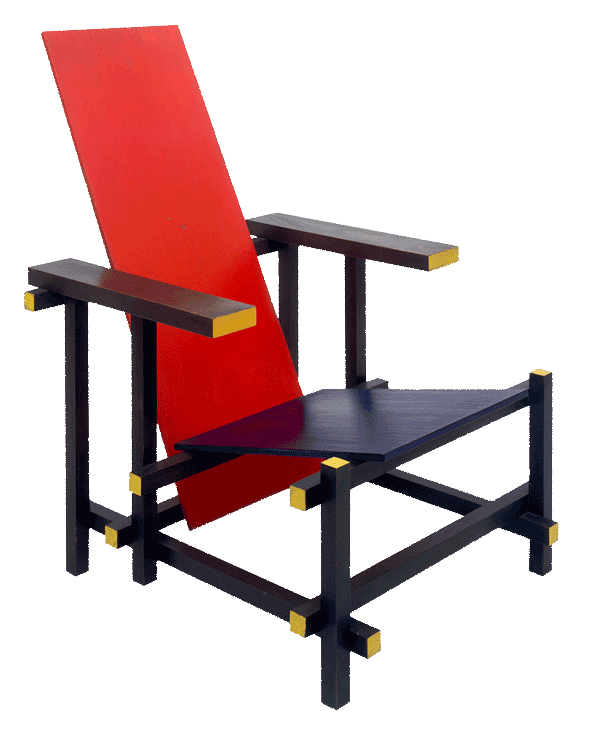Gerrit Rietveld conceived each piece of furniture as an ideal, abstract composition of surfaces and lines in space. The rigor with which he put this into practice makes “Roodblauwe stoel” a key object in modern furniture design. The form of abstraction Rietveld adopts here bears comparison to painter Piet Mondrian. Mondrian, and later Rietveld, were among the artists and architects who grouped around Theo van Doesburg and his journal De Stijl, and whose radical concepts had a lasting impact on twentieth-century art. Both Mondrian and Rietveld reduced given realities to their linear and planar characteristics: where Mondrian took landscapes as his model, Rietveld focused on the concept of a traditional, massive armchair, which he transformed into a geometric entity. In doing so, as Rietveld himself explained, he was concerned with joining “the components without crippling them, so that to the greatest degree possible the one is not dominated or made dependent on the other; most importantly, the work in its entirety must be able to stand freely and brightly on its own two feet, and the form must triumph over the material.”1 The followers of De Stijl adopted the “Roodblauwe stoel,” at that point still in its first, unpainted version, as their manifesto.
...[T]here is no specific prototype of the chair, only a number of variations which have relatively little in common. As Reyer Kras, former curator of the Stedelijk Museum in Amsterdam, writes, Rietveld was evidently conscious of the fact “that formal order has nothing to do with precalculated, strictly repeated sizes and proportions, but rather is exclusively the domain of a good eye.”3 However, Rietveld felt it should in principle be possible to produce his chair on an industrial scale. The elements used were excellently suited both for self-assembly furniture and for mass production, as they could be manufactured with the simplest mechanical means and were already available as standardized wood lengths. The first version of the “Roodblauwe stoel”, still unpainted and somewhat larger than the later model, as well as having side panels under the armrests, was built by Rietveld around 1918, in other words shortly before he joined De Stijl.
The Italian company Cassina has been manufacturing this version of the chair since 1973.
source: design-museum.de
(1) Gerrit T. Rietveld, quoted in Jan van Geest and Otakar Mácel, Stühle aus Stahl (Cologne, 1980), p. 16f.
(2) Gerrit T. Rietveld, quoted from Reyer Kras, “Gerrit Thomas Rietveld 1888–1964 – Furniture Maker and Architect,” in Gerrit Rietveld: A Centenary Exhibition (New York: Barry Friedman, Ltd. 1988), p. 13.
(3) Reyer Kras “Gerrit Thomas Rietveld 1888–1964 – Furniture Maker and Architect,” in Gerrit Rietveld: A Centenary Exhibition (New York: Barry Friedman, Ltd., 1988), p. 15.
